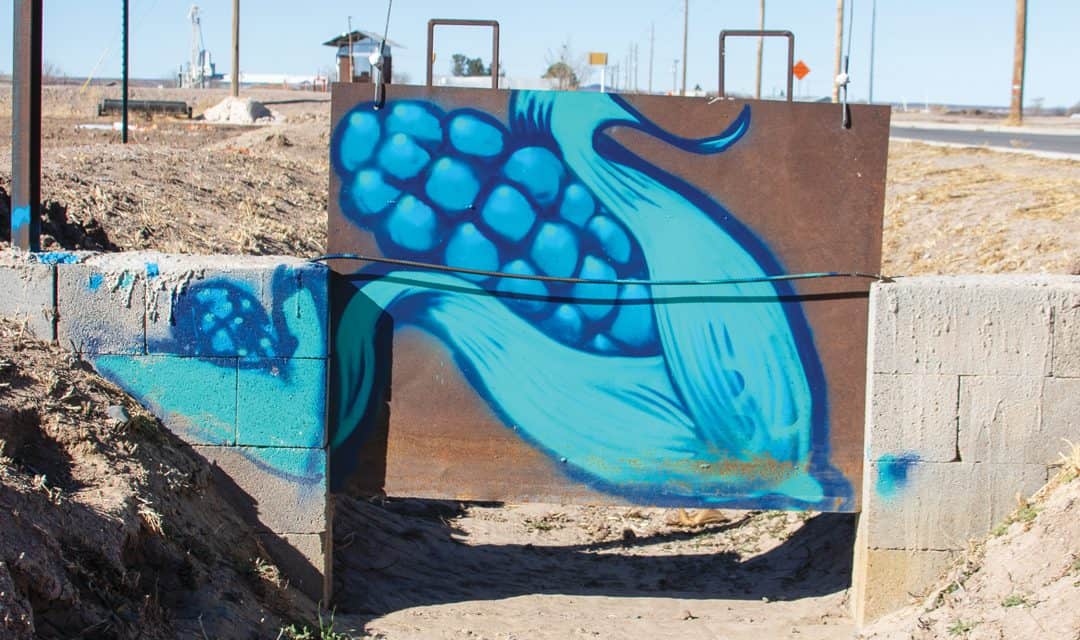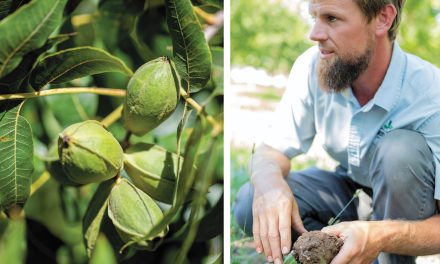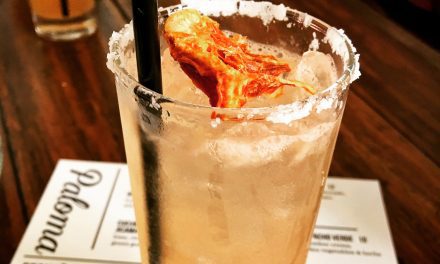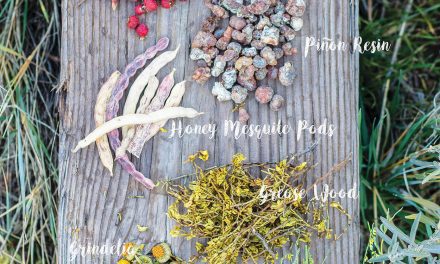Small Farms Experiment with Landrace Crops
By Shahid Mustafa · Photos by Stephanie Cameron

De Colores Food and Farms wheat field in Berino in late January.
Contrary to what many believe, small grains, specifically barley, rye, and wheat, have a rich agricultural history in the desert Southwest. White Sonora wheat was introduced to what is now Arizona by Spanish missionaries in the late seventeenth century. It proved its adaptability and, because it could be grown during the time of year that maize could not, became a staple in the diet of the Tohono O’odham and Pima peoples. According to ethnobotanist Gary Paul Nabhan, its cultivation in Sonora, Arizona, and California led to it becoming a cash crop in the mid-nineteenth century, and its unique flavor and texture lent itself to a traditional southwestern diet. In fact, the white flour tortilla owes its existence to the development of White Sonora wheat. White Sonora was one of Arizona’s first territorial exports, being grown by the O’odham and Maricopa peoples, Sonoran Hispanics, and immigrant northern Europeans for sales to both California and the Midwest. The Pima and Maricopa harvests supplied both the Union and Confederate troops with most of their wheat flour during the Civil War. Up until the early half of the twentieth century, wheat production was such a significant contributor to the agricultural economy of the region that Las Vegas, New Mexico, was known as the “grain belt,” and the state of New Mexico was home to over three hundred mills. Today, there is one.
Sonoran heirloom wheat is a drought-tolerant, disease-resistant, tall-grass grain that can help reduce soil erosion and suppress weeds. Small grains are not big water consumers and they can be grown during the coolest part of the year. Holding the soil during the winter, and not exposing acres of bare soil to the elements, they serve a great role in soil regeneration and can help diversify crop rotations. As Dr. Rich Pratt of New Mexico State University’s Cropping Systems Research Innovation Program puts it, they are “less thirsty, and provide environmental services at a premium.” While many regional growers plant the crop for its regenerative value as cover crop—that is, a winter crop grown primarily for soil health and weed suppression and often tilled into the soil before the plants reach maturity—fewer grow the crop for a grain harvest.
Yvonne Diaz, who owns and operates De Colores Food and Farms in Berino, believes in growing traditional grains in the region to ensure our continued access to them. Since she was in middle school, Diaz felt a connection to the land. Her father would take her to visit her family in Durango, Mexico, who were ejidatarios (communal landowners), using water from the acequias to water pecan and quince trees. After pursuing a degree in animal science, and later a master’s degree in agricultural education from New Mexico State University, Diaz was introduced to NMSU’s Research Initiative for Scientific Enhancement (RISE). Through RISE, she learned about medicinal plants of the Southwest and subsequently discovered the Border Agricultural Workers Center of El Paso. There, she began volunteering and becoming even more interested in learning about the food system and how it affects the land, the people who produce food, and the people who eat it. Not long after completing an American Friends Service Committee (AFSC NM) Farmer-to-Farmer training program led by agriculturalist Don Bustos, she set out to begin her journey.

Diaz has been farming on twelve acres in Berino since 2018, where she has produced Ysleta blue corn and Mexican June corn, the latter of which she says is amazing for masa or posole. In the fall of 2019, she began to experiment with barley and White Sonora wheat. On a little less than an acre of each crop, she was able to yield around a thousand pounds of both. In 2020, she planted three acres of White Sonora wheat. Diaz is working with the Southwest Grain Collaborative to determine the market demand for White Sonora wheat and establish standards of efficiency.
Diaz says that previously she believed wheat was only an imported crop, but now she sees it as a crop having a connection with the land and the people. In her words, “One of the benefits of growing wheat and heritage corn is it reminds me of its historic cultural significance. Our DNA remembers these foods.” She has used wheat berries as an alternative to other grains such as quinoa, and says they taste great. She’s also helping people rediscover bread making, and is working with local chef Mateo Herrera, who makes specialty tamales and sweet breads with the corn and wheat that he buys from her. In addition to revitalizing historic traditions, she also hopes that, ultimately, the work she does translates to supporting more fair-wage opportunities for agricultural workers. Diaz says, “Being a part of a community of farmers working as a collaborative has been helpful, and I’m hopeful that community support in production as well as developing a market will lead to a change in the perceived value of local agriculture.”

Shahid Mustafa
Shahid Mustafa owns and runs Taylor Hood Farms, practicing regenerative organic agriculture on more than three acres in El Paso, Texas, and offering a CSA with home delivery. Through his nonprofit organization DYGUP/Sustain (DYGUP stands for Developing Youth from the Ground Up), he has worked with the science department at Las Cruces High School to implement an environmental literacy curriculum and establish a one-acre plot where students receive credit for helping with all stages of vegetable production. With plans to become a certified organic farm and train a new generation of farmers, he hopes his efforts will be an inspiration for farmers to adopt the regenerative organic practice.












